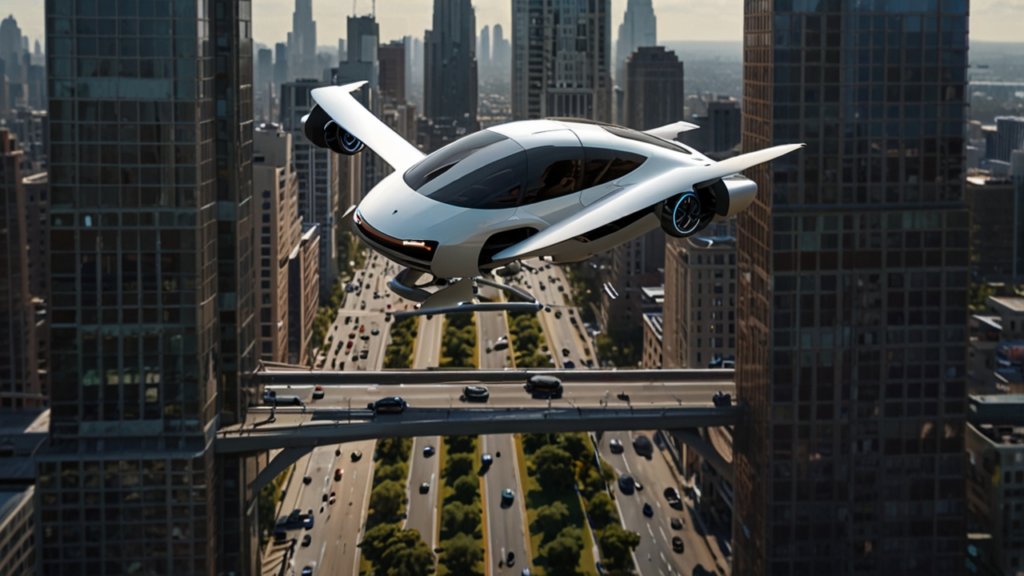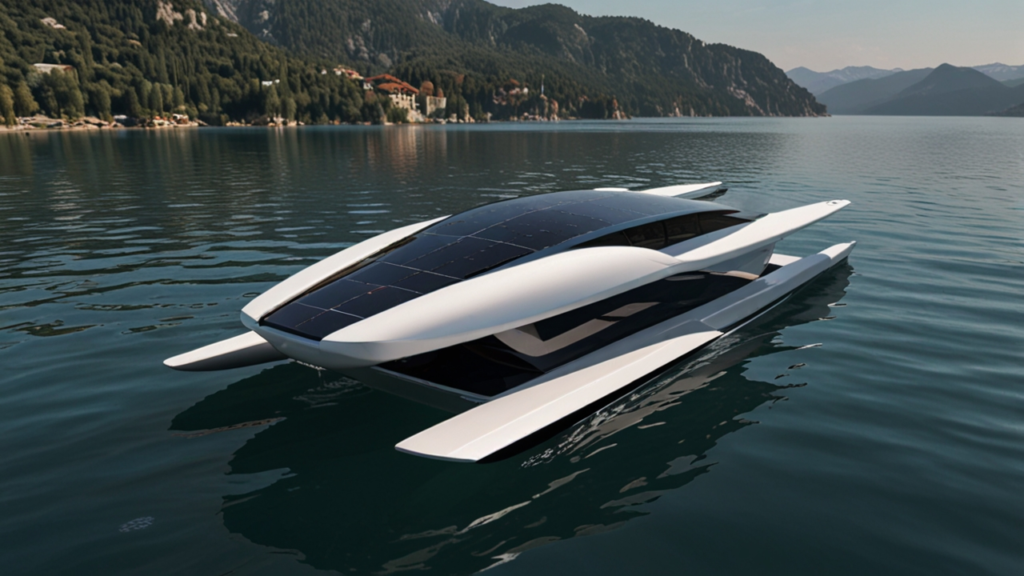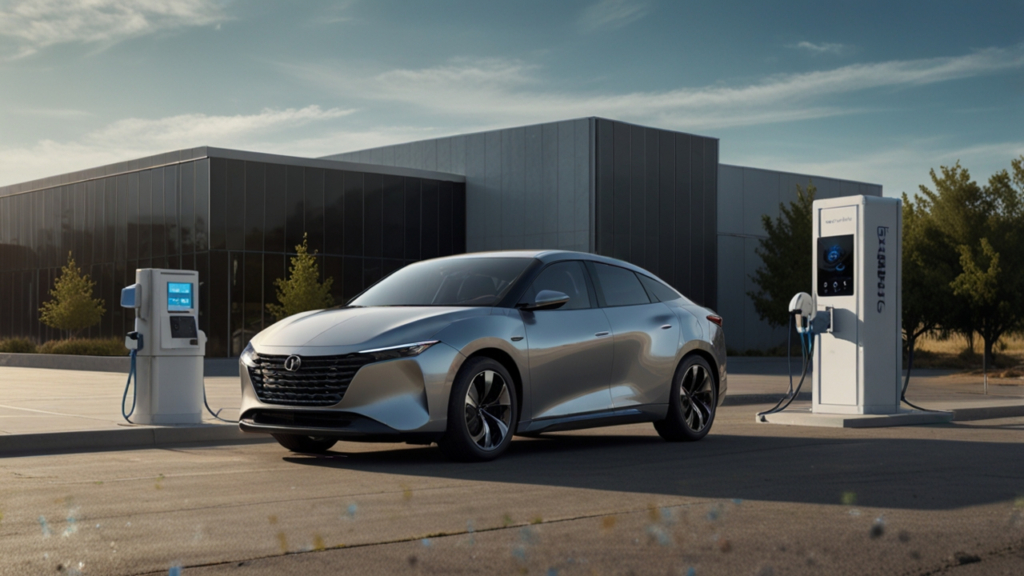Flying Car: 6 Game-Changing Benefits
The future of mobility is here, and it comes with an exciting twist. Innovative technology is reshaping how we think about transportation, merging ground and aerial travel into one seamless experience.
With breakthroughs in energy efficiency, engineering, and regulatory frameworks, this emerging field is capturing the imagination of inventors and investors alike. The modern marvels of design are advancing toward a practical, everyday solution.
In this article, you will learn about the journey from early prototypes to today’s innovative models. Are you ready to explore the evolution of this incredible concept?
Table of Contents
Introduction to Flying Car
Concept Origins and Vision
The idea of a flying car has intrigued innovators for over a century. Early experiments like the 1917 Curtiss Autoplane laid the groundwork. This revolutionary design was aimed at merging the functionalities of ground vehicles and aerial transport. The concept emerged as a solution to overcrowded cities and long commute times. It envisions a future in which travel is more efficient and accessible.
Not long ago, pioneers such as the inventors behind the Taylor Aerocar and Fulton Airphibian demonstrated that this dream could become a reality, even though challenges like high cost and regulatory hurdles slowed progress. Have you ever wondered what it would feel like to soar above traffic while enjoying an uninterrupted journey?
Modern Context and Enthusiasm
Today, the renewed interest in developing an innovative mode of transport has spurred fresh investments and technological advancements. You can explore the latest trends in Emerging Transportation Technologies that support this vision. The excitement is palpable among engineers and futurists, especially as prototypes now demonstrate remarkable improvements.
Through a combination of creative thinking and advanced engineering, these vehicles are no longer mere fantasy. As regulatory bodies begin to engage with these advancements, expectations continue to rise. Do you feel the same surge of optimism about what the future holds?
Evolution and History of Flying Car
Early Attempts and Prototypes Featuring Flying Car
In the early days, the evolution of this technology was characterized by experimental designs. Notable prototypes include the Curtiss Autoplane (1917) and later designs like the Fulton Airphibian (1946) and Taylor Aerocar (1949). These vehicles aimed to offer both road and air capabilities. Despite the promise, high costs and low demand limited early commercial success.
More recently, DARPA’s Transformer program in 2009 attempted to create a four-person VTOL vehicle. Although this project ended in 2013, it paved the way for future innovation and demonstrated valuable engineering concepts. Can you imagine the bold thinking that pushed these boundaries?
Key Milestones Over the Decades
Throughout the 20th century and into the modern era, breakthrough moments have shaped the progress of these advanced vehicles. The first manned flight of an electric VTOL test vehicle, known as “BlackFly” in 2011 in Canada, marked a significant milestone. Over the past decade, companies like Alef Aeronautics, Samson Sky, and Doroni Aerospace have introduced innovative designs that push technical and regulatory limits.
For more details on early advancements, check this detailed study on historical developments. What do you think remains the most impressive breakthrough from the past?
How Personal Aerial Vehicle Enhances Flying Car
Main Technologies Behind the Integration
Modern designs rely on the integration of efficient electric propulsion and cutting-edge materials. The use of lightweight composites and advanced alloys has been critical in boosting performance. These breakthroughs enable a vehicle to operate effectively both on roads and in the air.
For instance, electric propulsion not only minimizes emissions and noise but also drives efficiency, making the vehicle ideal for urban environments. Technical innovations in battery energy density and flight control systems underpin these achievements. Do you appreciate the importance of such materials in the design process?
Synergy of Road and Air Functionalities
By combining traditional car technology with recent developments in aerial navigation, these vehicles offer unprecedented flexibility. Hybrid designs, such as those used in the Samson Sky Switchblade, leverage both road and aerial capabilities. This approach enhances functionality and extends the vehicle’s operational range, offering a practical model for future everyday use.
Visit this Smart Mobility tag link for more insights on maximizing travel capabilities. Could this synergy change how you plan your daily commute?
Urban Air Mobility Systems and Their Applications
Integrating Aerial Vehicles into Cityscapes
The scope of using these advanced vehicles extends beyond personal travel. Urban air mobility (UAM) systems envision fleets of on-demand vehicles offering air taxi services, thereby reducing ground congestion. Well-planned digital air traffic management and vertiport installations are key components of this integration.
As cities expand, authorities are looking to these systems to alleviate gridlock and decrease commute times. You can also explore additional perspectives on Urban Transportation benefits. Have you ever considered how air mobility could transform your urban experience?
Applications and Environmental Impact
These innovations offer significant environmental benefits due to electric propulsion, which lowers emissions compared to traditional vehicles. In metropolitan areas, quieter operation and reduced fuel consumption make these models attractive. Currently, regulatory authorities are working to ensure proper airspace management and safety standards.
For further verification, experts cite data and forecasts from advanced urban air mobility studies. How might the positive environmental impact change your perspective on future travel?
Real-World Case Studies of Flying Car
Successful Prototypes and Commercial Milestones
Real progress is evident in prototypes such as Alef Aeronautics’ Model A. This vehicle recently received the first FAA airworthiness certification and is scheduled for production in late 2025. Its specifications include a 200-mile road drive and a 110-mile flight per charge.
Other notable models include the ASKA A5, which successfully completed a 300-mile drive and a 30-second flight in 2023, and the Samson Sky Switchblade, whose test flight reached a height of 500 feet and a speed of 190 mph. Have these case studies sparked your imagination for future travel?
Comparison of Global Initiatives
Innovative projects are emerging worldwide. In China, the XPENG Land Aircraft Carrier was showcased at CES 2025 and expects deliveries in 2026. In the U.S., companies such as Wisk and Aurora Flight Sciences are making significant strides by developing fully autonomous air taxi solutions.
Below is a comparison table summarizing key case studies:
Comprehensive Comparison of Case Studies
| Example | Feature | Specification | Region |
|---|---|---|---|
| Alef Model A | FAA Certified | 200 miles drive, 110 miles flight | USA |
| ASKA A5 | Fully Electric | 300-mile drive, 30-sec flight | USA |
| Samson Sky Switchblade | Roadable Aircraft | 500 feet altitude, 190 mph speed | USA |
| XPENG Land Aircraft Carrier | CES Debut | Delivery in 2026 | China |
| Wisk Air Taxi | Autonomous Design | 90-mile range, 110-120 knots | USA |
For additional insights, you can read more on market trends. Do you think one of these models could become widely adopted in your city?
Vertical Takeoff in Modern Flying Car Solutions
Technical Aspects of VTOL Systems
Vertical takeoff systems allow these vehicles to soar without the need for traditional runways. This technology is crucial in crowded urban environments where space is limited. Vendors have successfully integrated VTOL mechanisms which enable efficient transitions between ground and aerial movements.
The combination of VTOL mechanisms with electric propulsion and hybrid designs marks a hallmark of modern engineering ingenuity. Detailed studies from technical analyses outline these advances. What challenges do you foresee in implementing such systems broadly?
Safety, Regulation, and Performance
The performance of VTOL systems is continuously being refined. Safety remains a critical focus, with extensive testing and adherence to strict guidelines by regulatory bodies. Vehicles like the Samson Sky Switchblade have demonstrated that achieving VTOL performance without compromising safety is possible.
Ongoing improvements in flight control systems and lightweight materials further enhance performance reliability. Consider the balance between high-tech features and everyday usability. Do you feel confident that evolving regulations will keep pace with rapid technological improvements?
Future Trends: Transportation Revolution and Beyond
Projected Growth and Commercialization
Experts predict that the flying car market could reach multi-billion-dollar valuations by 2030. The coming decade is expected to see early commercialization with initial deliveries starting as soon as 2025. Regulatory bodies are gradually certifying vehicles for limited public use.
Future models will likely form part of extensive urban air mobility networks, where on-demand air taxis reduce congestion and offer flexible travel options. For more insights, please visit commercial developments. Have you ever envisioned a world where urban travel is completely reshaped?
Integration with Future Infrastructure
As these vehicles evolve, their integration with modern urban infrastructure becomes critical. New designs are expected to include smart integration with charging stations, vertiports, and digital airspace management systems. These future trends indicate a broad transportation revolution, transforming how cities operate.
International harmonization of regulatory standards and the establishment of robust safety protocols will be pivotal. This stepwise evolution aims to bridge the gap between prototypes and fully realized commercial transport vehicles. How would you adapt to living in a city designed with such cutting-edge infrastructure?
Flying Car: A Captivating Glimpse into Possibilities
This section offers an inviting narrative that transports you into a visionary world where innovation meets practicality. Imagine a mode of travel that transforms your daily routine—a realm where sleek, sophisticated machines redefine mobility and inspire new adventures. The creative spirit of innovative design pulses through every aspect of this evolution, energizing urban landscapes with technology that bends the rules of conventional travel. It is a narrative that transcends current trends, opening up uncharted possibilities that leave an indelible mark on society.
With unexpected twists in operational dynamics and a refined approach to energy efficiency, this futuristic vision surprises you with its bold, daring progression. Even as challenges and opportunities intertwine, a persistent drive to enhance life in metropolitan spaces resonates powerfully. Such imaginative journeys prompt us to question, reflect, and embrace a future replete with creative solutions that challenge our everyday expectations. This captivating perspective bridges traditional ideas with emerging paradigms, inviting you to take a closer look and be part of an epic tale that is just beginning to unfold.
The narrative invites further exploration and is a stirring reminder of the ingenuity that motivates society to continuously reinvent itself.
FAQ
What defines a flying car?
Generally accepted, a flying car is a dual-mode vehicle capable of operating both on solid ground and in the air with vertical takeoff and landing capabilities.
How did the concept evolve?
Historically, experimental prototypes dating back to the early 20th century led to today’s advanced designs as technology and regulatory frameworks matured.
What are the key technologies behind these vehicles?
Key technologies include electric propulsion systems, lightweight composites, advanced flight control mechanisms, and VTOL designs.
Are these vehicles safe for public use?
Safety remains a crucial focus, with rigorous testing and regulatory oversight ensuring that only certified vehicles operate under strict protocols.
What can we expect in the future?
Future trends point towards expanded urban air mobility, integration with smart infrastructure, and large-scale commercialization starting as early as 2025.
Conclusion
The journey of a flying car from early dreams to modern innovations is a testament to our unyielding creativity. Today’s progress in engineering and thoughtful regulatory approaches drive us ever closer to a future where seamless, efficient travel is a reality.
This evolution touches various aspects of our lives. By merging practical road functionality with the freedom of aerial travel, these inventions are poised to reshape urban transportation. Have you experienced similar futuristic innovations in your own environment? For more information, visit our category on Future Mobility or check other articles on related topics.
If you have any questions or want to share your thoughts, please Contact us. We would love to hear from you!



